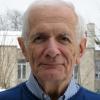
Saying the diocese can take away a parish’s building but not its community, about 350 members of a suppressed Cleveland parish defied their bishop’s orders and celebrated Mass Aug. 15 in a rented space as the legally incorporated Community of St. Peter.
Cleveland Bishop Richard Lennon declined to take any immediate punitive action against members of the suppressed parish. In a letter on the diocesan Web site Aug. 20, he stressed “the importance of unity and communion” among the faithful and said the action of the former parishioners of St. Peter is “of grave concern.”
But “rather than dismissive action,” Lennon said, “this is a time for prayer and calmness,” and he expressed hope for a meeting with the former pastor, Fr. Robert Marrone, and leaders of the community.
At the community’s second Sunday Mass Aug. 22, Marrone told the congregation that he and the community’s nine-member board of trustees had agreed to meet Lennon.
The St. Peter situation is somewhat unique among closed-down parishes in the country. In many cases, parishioners have struggled to keep their churches open in defiance of the local bishop, some even occupying the church buildings 24 hours a day. That is not the case here.
“As the bishop went around the diocese closing parishes,” said Bob Zack, a community leader, “he kept saying a parish is not a piece of real estate. It’s a community of people. We understood that, we got it. If he wants the building, fine, take it. But we refuse to be suppressed as a community.”
So St. Peter members formed a 501(c)3 legal entity, the Community of St. Peter, with Marrone as chaplain. They then rented a space for worship in a nearby building, set up an altar, baptismal font and religious icons.
While these plans were underway, Lennon in March sent a warning letter to every member of the former parish, saying, “Please know that I will not approve a priest celebrating the sacraments in any space other than a site approved by the diocese.”
He was concerned, Lennon wrote, “for you and your salvation and the good of the church in Cleveland. Where there is a breaking of unity and communion with the church, there are consequences that affect our relationship with the Lord.”
Leah Gary, president of the Community of St. Peter, said everyone regretted the loss of “our beloved worship space,” a century-old building in downtown Cleveland that had been recently renovated.
“We believe the decision to close this parish was unjust,” she said. “Now we’re no longer a parish; we’re a community. We are orthodox Catholics. We hold all the doctrines of the church. We are not breaking away. We aren’t starting a schism and we don’t have an agenda.”
Gary said the community consists of about a half of the 700 members of the former parish. The group met for months, she noted, trying to discern the best course of action and finally decided to proceed with Mass in the new space. About 350 people attended the first Mass, at which Marrone presided.
“Here, enlightened by Christ … we can renew our dedication to the truths of the faith,” he said in his homily. “Today is a day for action, not reaction; imagination, not fear.” At the conclusion of the service, wrote a reporter from the Cleveland Plain Dealer, there was extended applause, hugs and tears of joy. Some attending called the event a “historical moment,” a “big step” and “a little scary.”
After Lennon became bishop in 2006, he set up an 18-month clustering process with the aim of closing 50 parishes. Zack said the process was “flawed and unjust,” since it was clear from the start that St. Peter and another parish close to the Cleveland cathedral were to be closed. St. Peter parishioners protested that their parish was entirely solvent, drew members from all over the greater Cleveland area and was thriving, with ministries to a nearby public housing project, a women’s shelter, a men’s transitional shelter, and had the largest adult education program of any parish in the diocese. Zack noted that St. Peter had also adopted a local elementary school and was supplying volunteers to work with the children.
Much of the activity could be attributed to the leadership of Marrone, who possesses a quiet way of luring people into taking on responsibilities, Zack said.
When it became clear that the decision to close St. Peter would not be overturned, the parish joined with 11 other similar parishes in an appeal to the Vatican. Though the Vatican extended the deadline for appeals, Lennon ordered Marrone in early 2010 to shut down the parish. The last Mass was held on Easter Sunday, as plans for the community’s future moved forward. Zack found irony in the fact that the Vatican considers St. Peter still in existence while the appeal process continues, yet the bishop has formally put it out of existence.
Asked if community members were fearful of excommunication should they continue to celebrate Mass, Zack indicated that he considers Lennon’s decision unjust and that excommunication in that case would be invalid. “But everyone,” he said, “has to follow their own conscience and understanding.” He noted that one community member said he was confident that if he were excommunicated, the church would rescind that decision in 200 or 300 years, and he might even be canonized as a saint.
[Robert McClory is a longtime NCR contributor.]
Stories in this series on parish closings:
Advertisement |




